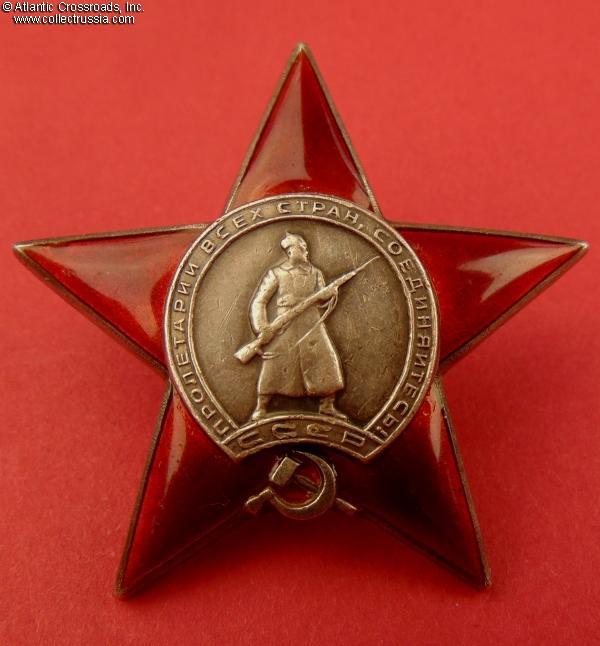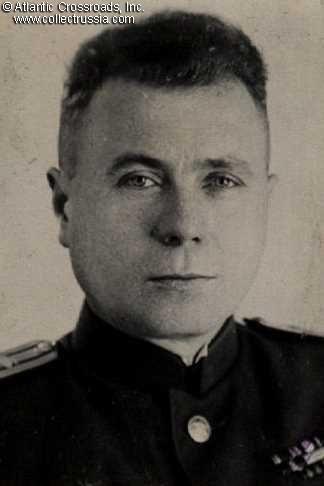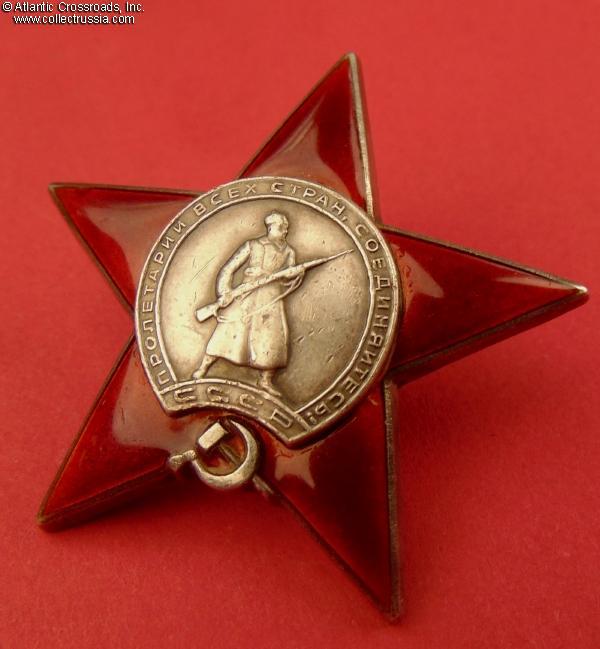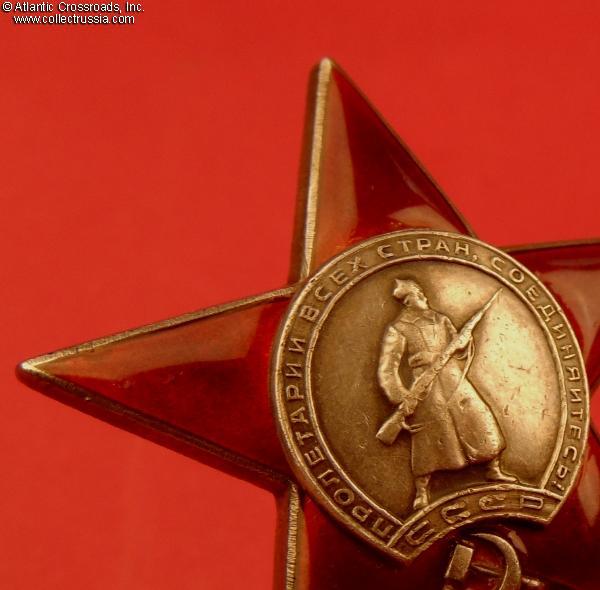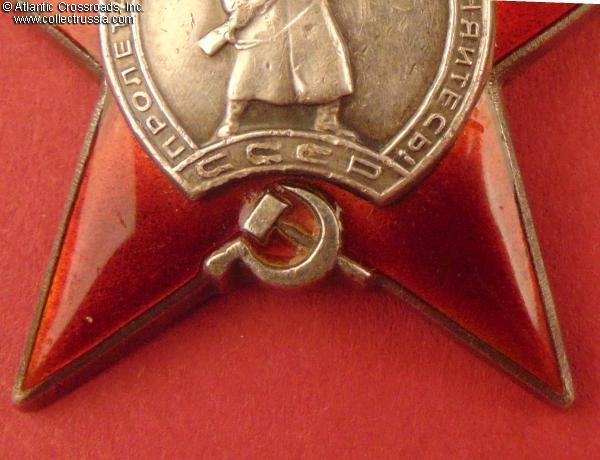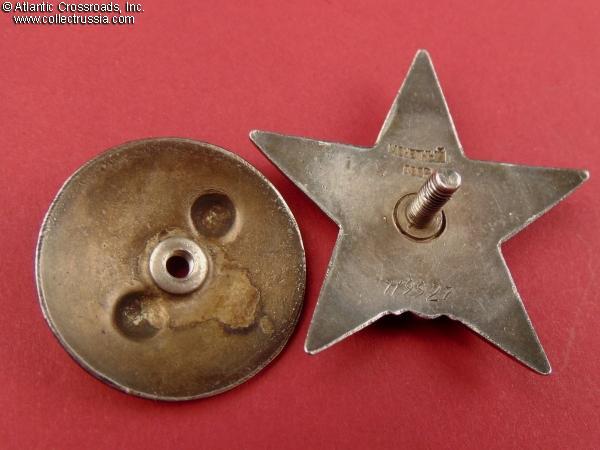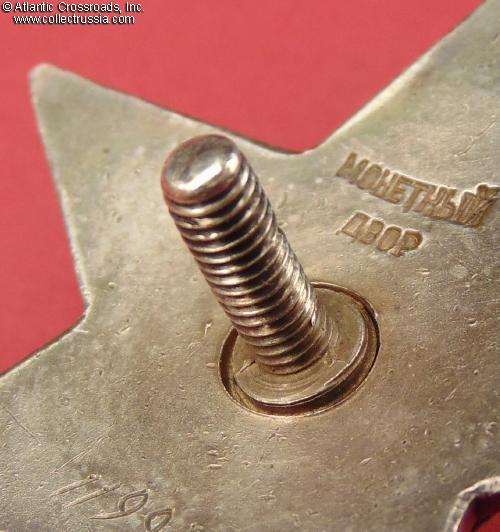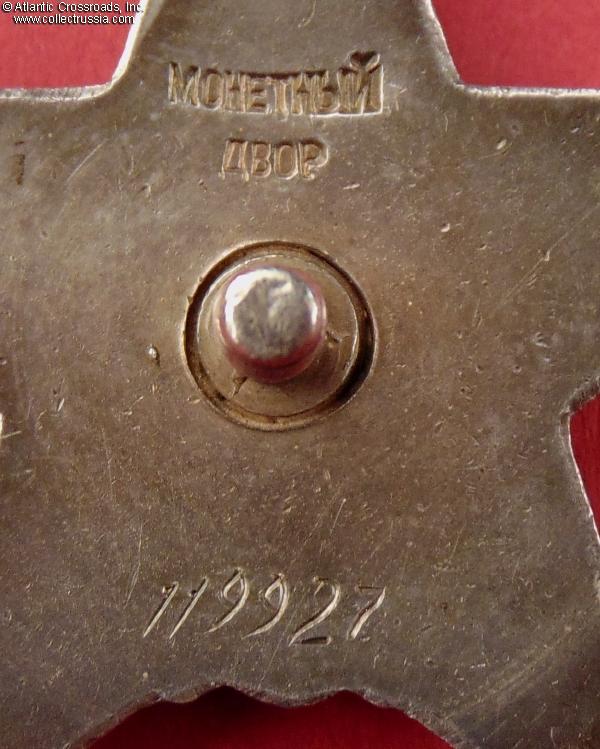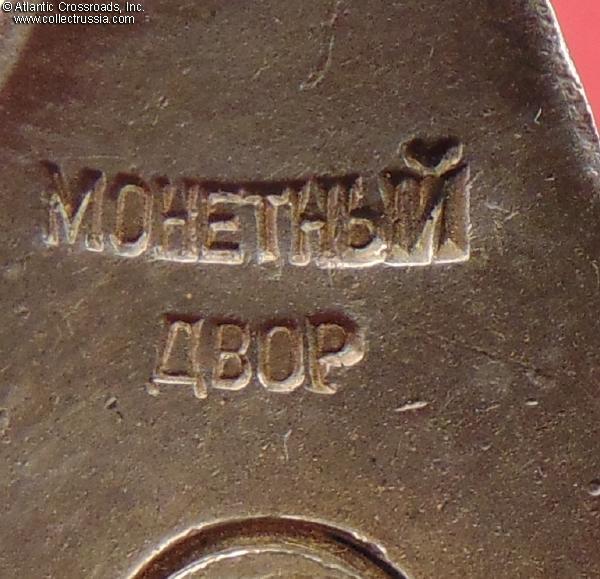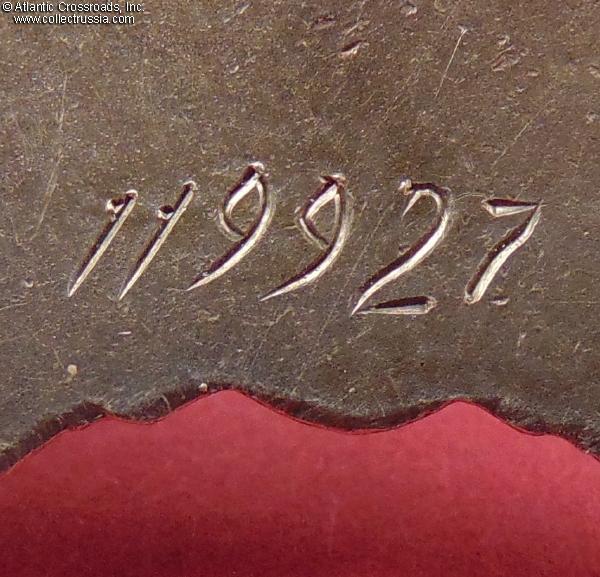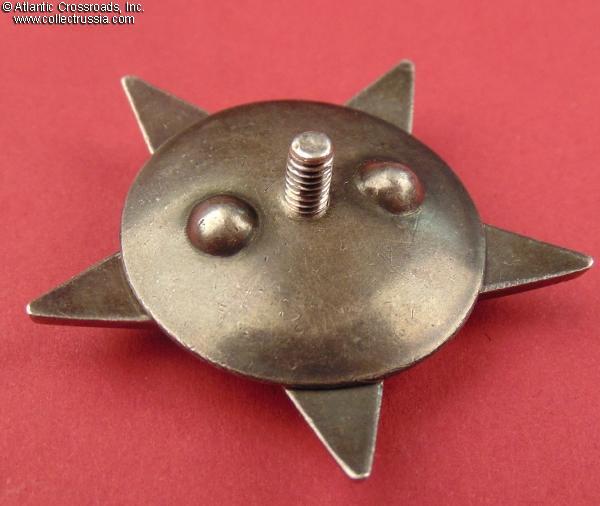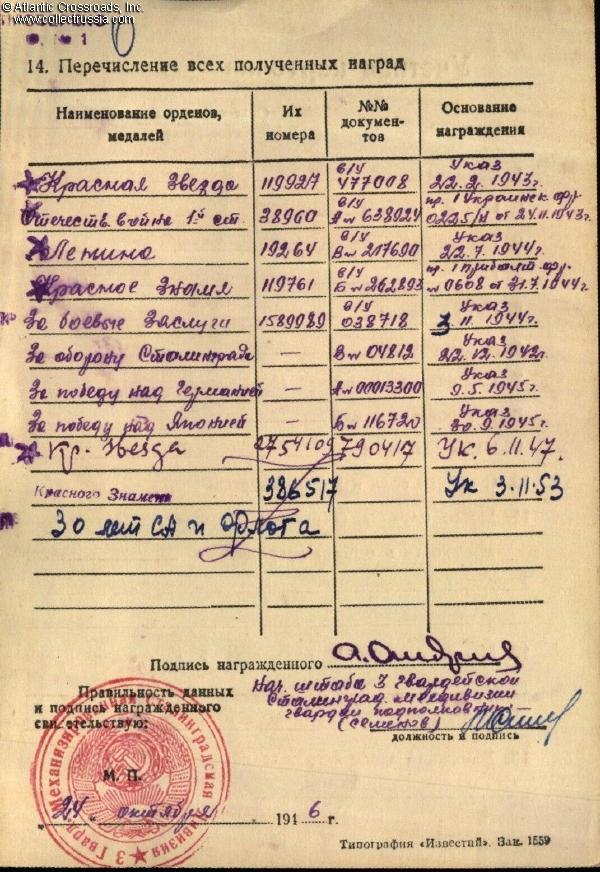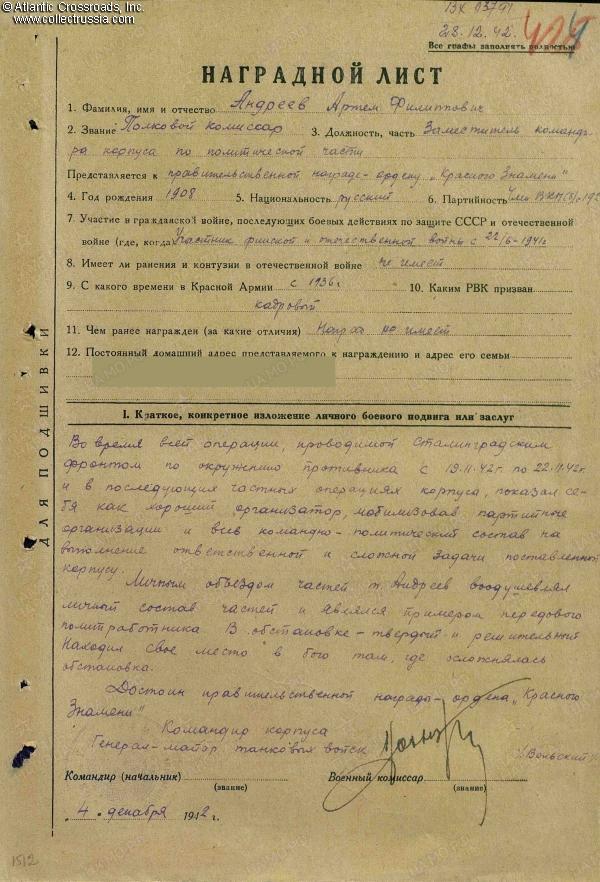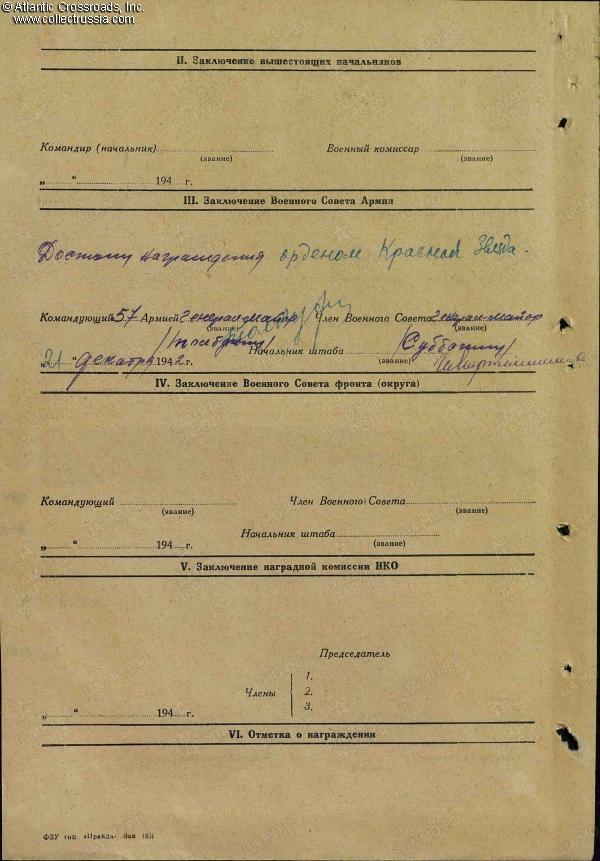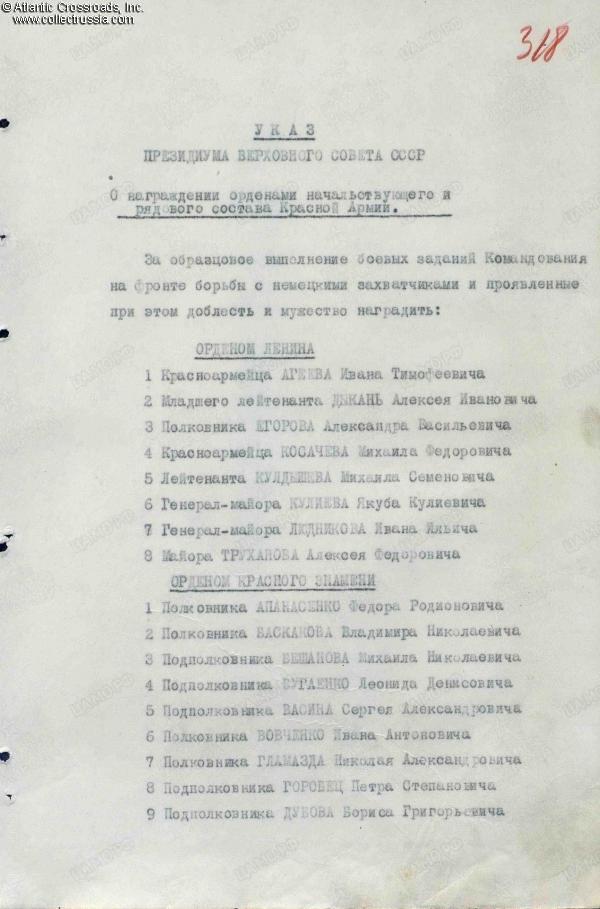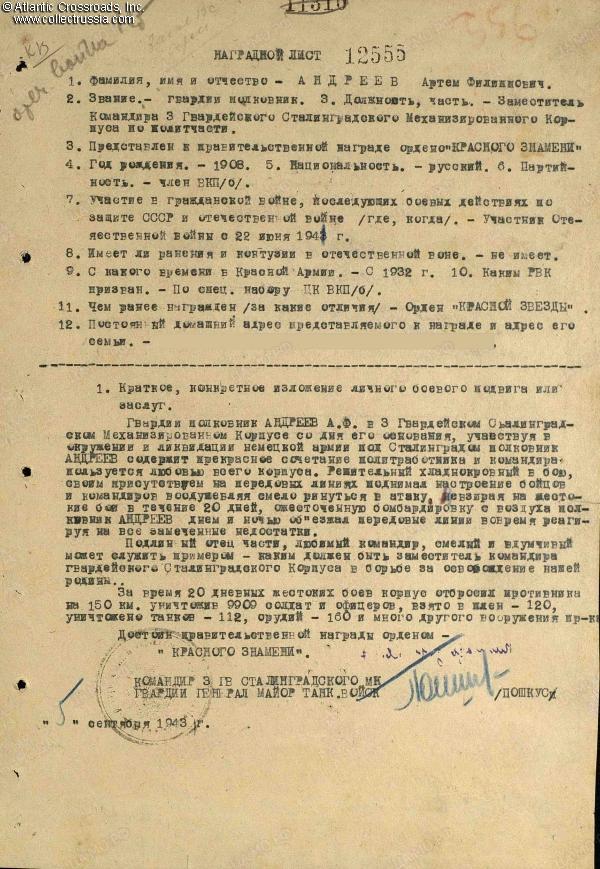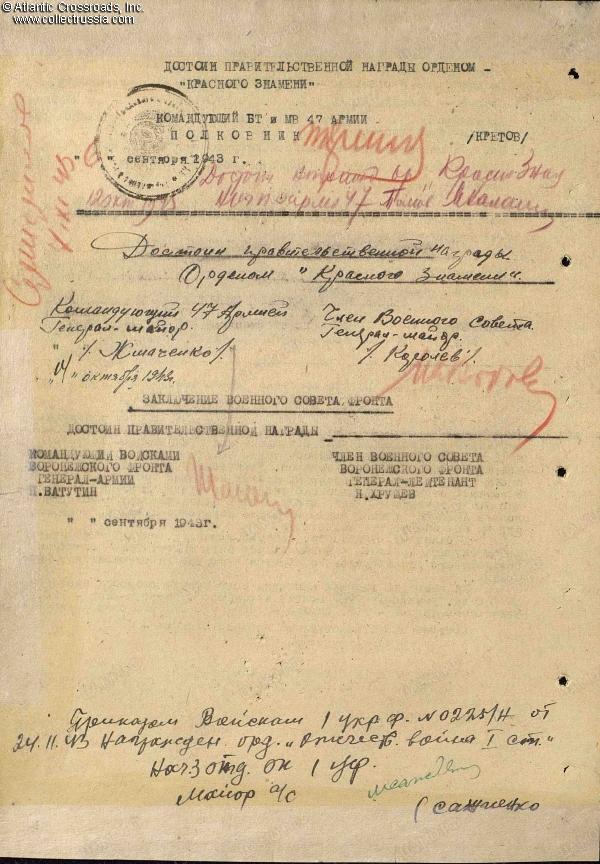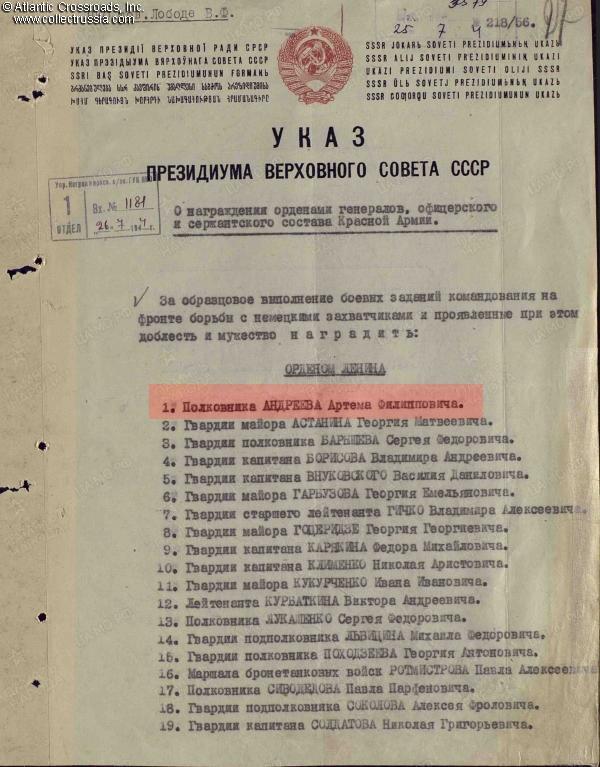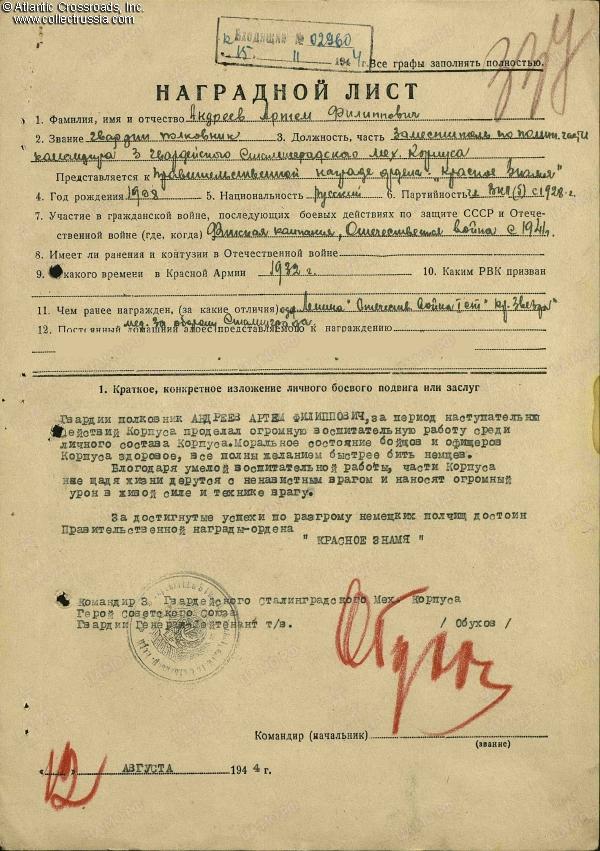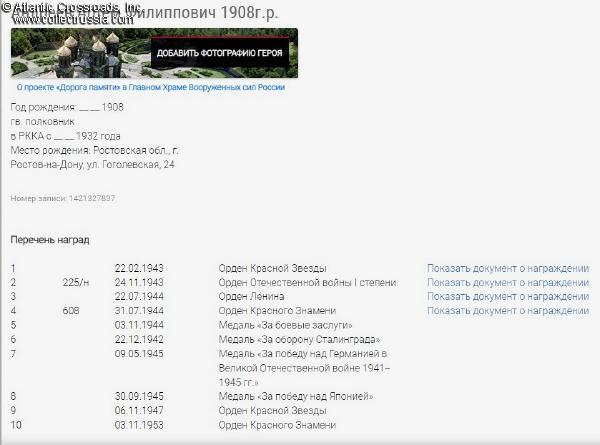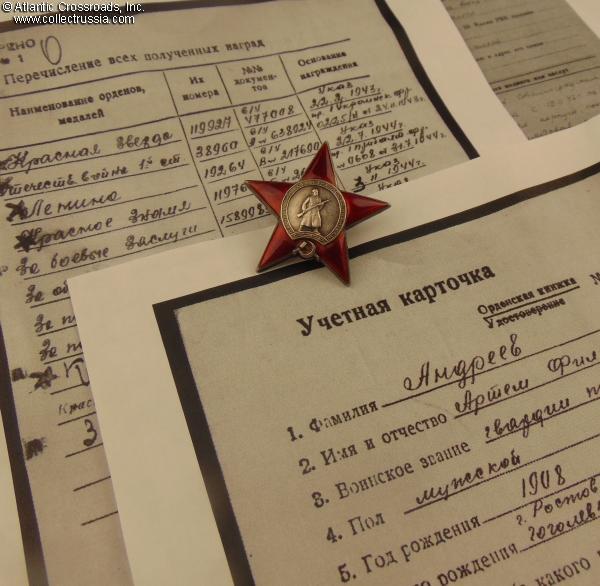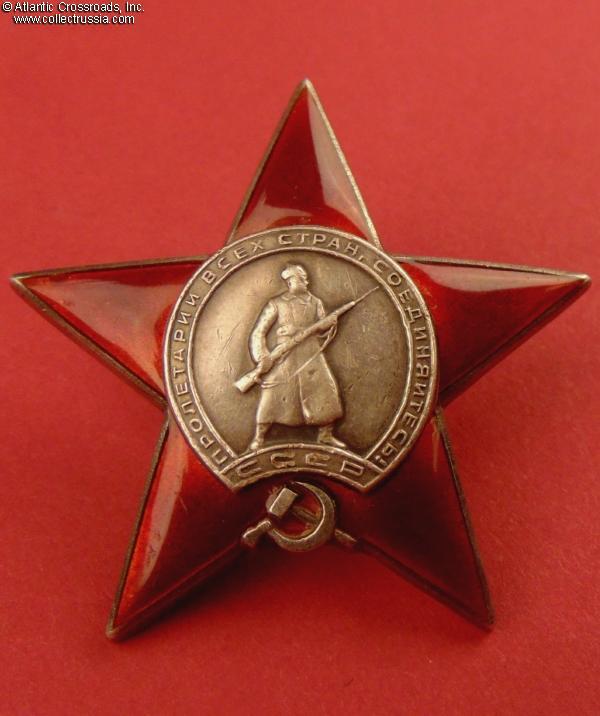
Order of the Red Star, Type 4 Variation 3, #119927, awarded on 22 February 1943 to Regimental Commissar (military political rank equivalent of a colonel), Artyom Andreev (Артем Филиппович Андреев), Chief Political Officer of the 3rd Guards Mechanized Corps (formerly 4th Mechanized Corps), for the Battle of Stalingrad.
Silver, enamel; 46.3 mm tall x 48.1 mm wide; weighs 29.4 g without the screw plate. This specimen was manufactured in 1943 at the Moscow Mint. Features screw post base and slightly curved up mint mark with the last letter in the word "Monetnyi" having a dash located above the letter. The screw post base is "sunk-in"; its upper edge is approximately flush with the surface of the reverse. /N. Strekalov, V. Durov, "Order of the Red Star", pp. 230, 231/.
Condition is very fine to excellent, far better than the average for an early issue. The enamel is extremely well preserved an
Silver, enamel; 46.3 mm tall x 48.1 mm wide; weighs 29.4 g without the screw plate. This specimen was manufactured in 1943 at the Moscow Mint. Features screw post base and slightly curved up mint mark with the last letter in the word "Monetnyi" having a dash located above the letter. The screw post base is "sunk-in"; its upper edge is approximately flush with the surface of the reverse. /N. Strekalov, V. Durov, "Order of the Red Star", pp. 230, 231/.
Condition is very fine to excellent, far better than the average for an early issue. The enamel is extremely well preserved and shows extremely attractive luster. There are few tiny contact marks and minuscule flakes, but even the largest of them, on the lower left and upper left arms, are barely noticeable to the naked eye. The enamel is free of chips, significant flaking or rubbing. The center medallion has only a few tiny dings but very little overall wear; its raised details are extremely well-preserved, practically pristine. There is an extremely attractive dark patina to silver on both the obverse and reverse. The screw post is over 11 long measured from its base, has not been reduced. The original silver screw plate is included.
Born in 1908 in the city of Rostov-on-Don, Artyom Andreev joined the Communist Party in 1928 at the age of 20 and in 1932, enlisted in the Red Army becoming a career military political officer. He fought in the Patriotic War from its first day on 22 June 1941. In September 1942, he was appointed military commissar of the 4th Mechanized Corps newly formed in the Volga Military District and earmarked specifically for the upcoming Soviet Stalingrad counteroffensive. Incidentally, the position of military commissar (and overall dual command in the Red Army) was abolished soon thereafter, at about the time when the 4th Mechanized Corps arrived at the front in mid-October. Thus, Andreev would henceforth serve as deputy commander and chief political officer of the corps, still a very important position albeit no longer equal to that of the corps commander.
Acting as the armored spearhead of the Stalingrad Front, the 4th Mechanized Corps attacked on 20 November and struck the southern flank of the overexposed German and Romanian forces around Stalingrad (due to a blizzard, the attack from the south began a day after the Southwestern Front's pincer movement from the north). Within hours, the corps broke through the Romanian VI Corps, the demoralized Romanian troops fleeing in panic before the onslaught of Soviet armor. In the following days, the corps covered over 100 km, reached the area of Kalach with its vital Don River crossing, and linked up with 4th Tank Corps of the Southwestern Front, completing the encirclement of the German VI Army in the Stalingrad cauldron.
On 25 November, the 4th Mechanized Corps, now a part of the 57th Army, Stalingrad Front, proceeded to harass other Don River crossings in the areas of villages of Lyapichev and Logovskiy, thus denying the Germans in Stalingrad any hope of an immediate relief and sowing panic and confusion in the enemy rear. On 9 December, the corps was temporarily re-subordinated to the 5th Shock Army and three days later, engaged the Mainstein's LVII Panzer Corps attempting a breakthrough to the Stalingrad pocket. The German counter-strike codenamed Operation Wintergewtitter ultimately failed due to a large extent to the valor of the 4th Mechanized Corps' soldiers. The corps' successes came at a heavy price: even before the beginning of the Wintergewtitter on 12 December, it had less than half of the 220 tanks with which it started the campaign. On 18 December, a few days before the German relief effort completely ran out of steam, the nearly exhausted but triumphant 4th Mechanized Corps was elevated in status to a Guards unit becoming the 3rd Guards Mechanized Corps. Its performance was so extraordinary that later that month, it was named one of the best units of the entire Red Army on the front page of the army newspaper Krasnaya Zvezda ("Red Star"). On 27 January 1943, the corps was awarded with the honorific title of Stalingradskiy - i.e. "of Stalingrad fame" - for its contribution to Soviet victory at Stalingrad.
On 9 December, even as the fluid battle west of Stalingrad was still unfolding and its outcome yet far from certain, Artyom Andreev was recommended for the Order of the Red Star by the Commander of the 4th Mechanized Corps, Tank Corps Maj. Gen. Volskiy. The award commendation, one of the earliest for the Soviet counteroffensive at Stalingrad, stated that Andreev had been on the forefront uninterruptedly, organizing the troops and constantly showing firmness and decisiveness in most difficult situations. He thus set "an example of a foremost political officer." The decoration was approved on 21 December by the command of the 57th Army but was officially bestowed by a decree of the Supreme Soviet only on 22 February 1943, on the eve of the Red Army 25th anniversary and three weeks after the German surrender in Stalingrad.
Andreev would go on to earn several other combat decorations: the Order of the Patriotic War, 1st cl. in Nov. 1943; Order of Lenin in July 1944 for the Operation Bagration; and the Order of the Red Banner, also from July 1944 and not a length of service award. After the war, he added a length of service Order of the Red Star and Order of the Red Banner to his already very impressive war chest. As of October 1946, he was still serving with the 3rd Guards Mechanized Corps as its deputy commander and chief of the Political Department. Andreev remained on active duty in the military at least through 1953.
Research Materials: b/w photocopy of the award record card; award commendations for the Order of the Red Star and the 1944 Order of the
Red Banner (curiously, that one was a case of "proforma" commendation submitted by the corps commander after the award had already been
bestowed by an official decree); relevant pages of the decree concerning the Order of Lenin; and a nice photo of the recipient from a
Russian archival website. Detailed information about the 4th Mechanized / 3rd Guards Mechanized Corps is available in Volume III Red
Storm of Charles Sharp's book series Soviet Order of Battle, World War II, as well as several Russian-language online sources.
$795.00 Add to cart

